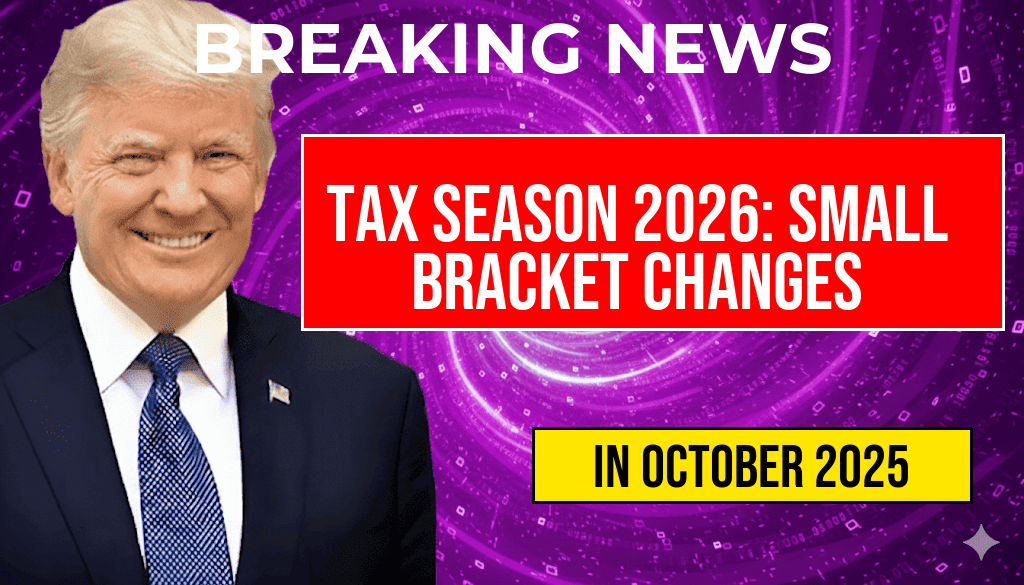Tax season 2026 is shaping up to bring subtle yet impactful changes for American taxpayers, according to recent projections from Bloomberg. The financial news giant’s analysis indicates minor adjustments to income tax brackets that could result in significant savings for many filers. While these shifts are not as extensive as in previous years, their cumulative effect might allow taxpayers to retain more of their earnings or reduce their owed taxes. The primary changes involve slight modifications to income thresholds within each bracket, designed to keep pace with inflation and economic growth. These adjustments could benefit a broad spectrum of taxpayers, from middle-income households to higher earners, especially those whose income levels hover near bracket boundaries. As the Internal Revenue Service (IRS) prepares to publish the official brackets later this year, understanding these projections can help taxpayers plan ahead and optimize their filings.
Projected Income Tax Bracket Adjustments for 2026
Minor Shifts in Income Thresholds
Bloomberg’s analysis, based on inflation forecasts and economic indicators, suggests that most income brackets will see modest increases in their threshold levels. These increases are intended to prevent “bracket creep,” where inflation pushes taxpayers into higher brackets without actual income growth. For example, the current top of the 12% bracket may rise by approximately 1.2%, allowing some filers to stay in lower tax tiers despite slight income increases. These adjustments are expected to be uniformly distributed across all brackets, maintaining the relative structure of the tax code while offering slight relief.
Summary of Key Changes
| Tax Rate | Current 2025 Threshold | Projected 2026 Threshold |
|---|---|---|
| 10% | $0 – $11,000 | $0 – $11,150 |
| 12% | $11,001 – $44,725 | $11,151 – $45,190 |
| 22% | $44,726 – $95,375 | $45,191 – $97,200 |
| 24% | $95,376 – $182,100 | $97,201 – $185,500 |
| 32% | $182,101 – $231,250 | $185,501 – $235,300 |
| 35% | $231,251 – $578,125 | $235,301 – $585,000 |
| 37% | $578,126 and above | $585,001 and above |
Implications for Taxpayers
The modest increases in income thresholds could translate into tangible savings, especially for those near bracket boundaries. Taxpayers earning just above current thresholds might find themselves staying within lower brackets, reducing their overall tax burden. For instance, a household earning approximately $45,000 — previously in the 12% bracket — might see their bracket threshold rise slightly, potentially lowering their effective tax rate and increasing their after-tax income.
Potential Benefits for Different Income Groups
- Middle-income taxpayers: Slightly higher thresholds could prevent marginal increases in tax rates, preserving more of their earnings.
- High earners: The increased brackets might not significantly alter their liabilities but could impact those with fluctuating incomes near the upper thresholds.
- Tax planning strategies: Knowing these adjustments early can help taxpayers adjust withholding or estimated payments, avoiding surprises at tax time.
Context Within Broader Tax Policy
The adjustments align with ongoing efforts to index the tax brackets to inflation, a practice designed to maintain the fairness of the tax system over time. Historically, inflation indexing prevents taxpayers from being pushed into higher brackets solely due to cost-of-living increases. While these changes are minor, they reflect a broader trend toward maintaining the integrity of the tax structure amidst economic fluctuations. For comprehensive details on the history and structure of the U.S. tax system, resources like Wikipedia’s page on U.S. taxation provide valuable context.
What Taxpayers Should Do Now
Though official IRS brackets for 2026 are expected later this year, taxpayers can start reviewing their current income and tax situation to anticipate potential savings. Consulting with a tax professional or using reputable tax software can help identify opportunities for deductions or adjustments based on these upcoming changes. Staying informed about legislative updates and IRS announcements will ensure that taxpayers are prepared to optimize their filings effectively.
As the tax landscape evolves, awareness of subtle bracket shifts can make a meaningful difference in taxpayers’ financial planning. The minor but strategic adjustments projected for 2026 demonstrate an ongoing effort to balance inflationary pressures with tax fairness, ultimately aiming to benefit a broad cross-section of American earners.
Frequently Asked Questions
Question
What are the main changes in tax brackets projected for the 2026 tax season?
Question
How might the minor adjustments in tax brackets affect my tax liability for 2026?
Question
Will these bracket changes result in significant savings for most taxpayers?
Question
Are there any other notable tax policy updates expected to impact 2026 filings aside from bracket adjustments?
Question
When should I start planning for my 2026 taxes considering these projected changes?






